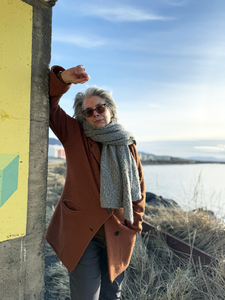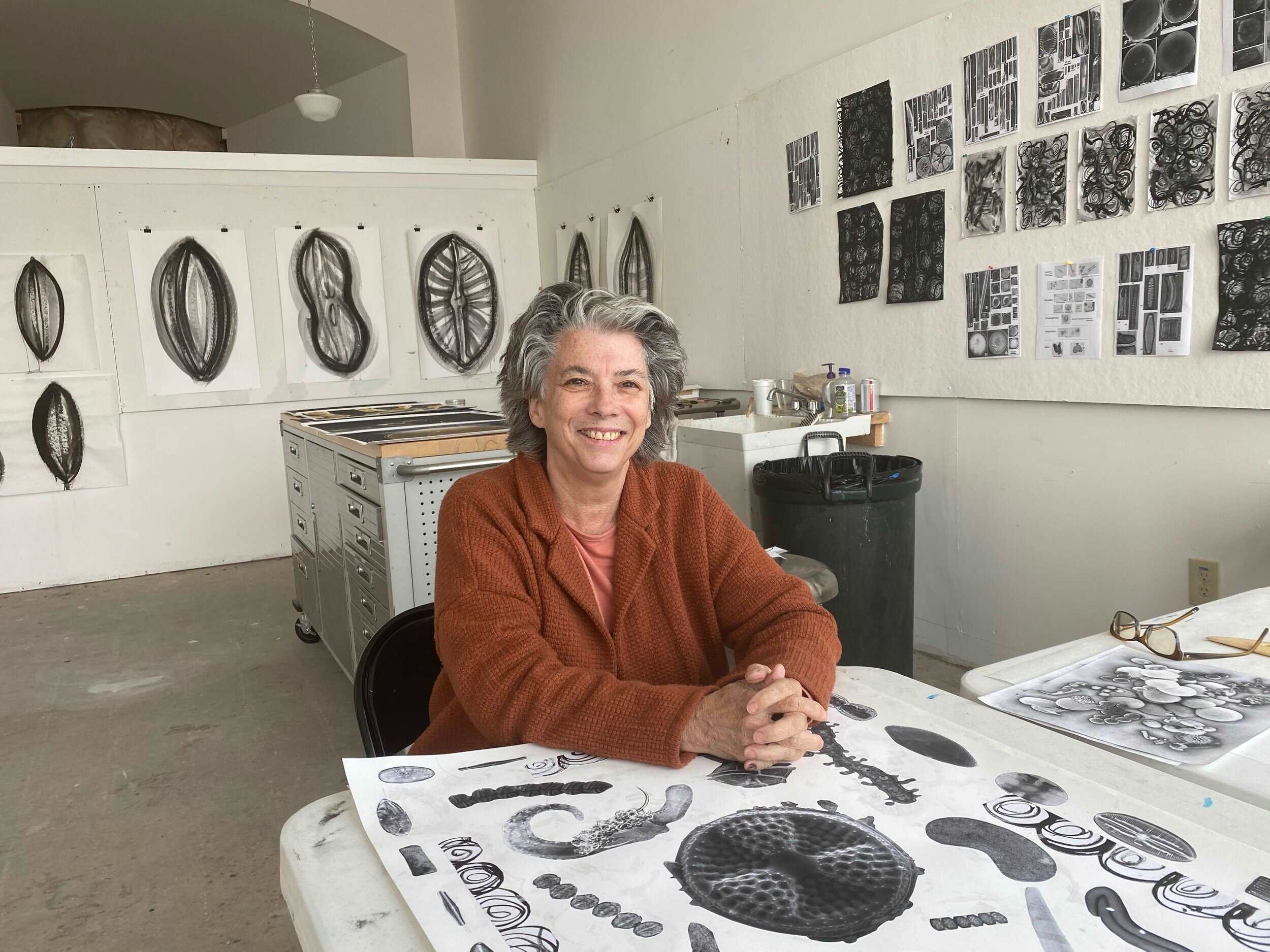
Julie Harrison
New York, NY
Julie Harrison is an award-winning visual artist based in New York who has moved between drawing, video, photography, painting, and performance.
Message
Julie Harrison (born Baltimore Maryland, 1952) is a New York-based multidisciplinary visual artist who probes science and technology to explore the dualities of nature and artifice. Her experimental process-driven work has garnered numerous awards including the National Endowment for the Arts, New York State Council on the Arts, New York Foundation for the Arts, Creative Artists Public Service Award, Funding Exchange / Paul Robeson Fund, the Film Fund, Barbara Latham Memorial Award, Colorado Video Award / 1st Prize from the Athens Film and Video Festival; Gold Apple / 1st Prize from the National Educational Film & Video Festival; and Honorable Mention from the Atlanta Film and Video Festival.
Harrison has exhibited widely, both locally and internationally, including solo shows at Southern Vermont Arts Center, Delaware Valley Arts Alliance, Crescent Tree Gallery in Claremont CA, Wekalet Behna in Alexandria Egypt, and Thundergulch in NYC. Museum group exhibitions include the Museum of Modern Art in New York, Museum of Arts & Design in New York, The Neuberger Museum/Purchase, The Albany State Museum, the Bronx Museum for the Arts, the New Museum of Contemporary Art in New York, Smith College Museum of Art, the Astoria Museum of the Moving Image (NY), Clark Humanities Museum, The Walker Art Center; and in Germany, the Staatliche Museum in Baden-Baden, the Munchner Stadtmuseum in Munich, and the Museum für Angewandte Kunst, Frankfurt.
Harrison’s work is documented in catalogues and has been positively reviewed in publications such as Hyperallergic, The New York Times, Journal of Artists Books, Directions, Library Journal, Booklist, The Albuquerque Tribune, The Independent, Toronto Globe & Mail, The Village Voice and Soho Weekly News. Two books by Harrison were published by Granary Books, and one with The New Press, and her work has been included in books and DVDs: A Book About Colab (And Related Activities); M/E/A/N/I/N/G: A Journal of Contemporary Art Issues; ETC: The Experimental Television Center 1969–2009 (DVD); Shark: a journal of poetics and art writing; and Tellus Audio Cassette Magazine. Artist residencies include NES in Iceland, Nordisk Kunstnarsenter Dale in Norway, Cold Spring Harbor Laboratory, Tides Institute & Museum of Art in Maine, The Residency Project in Pasadena, Visual Studies Workshop, Experimental Television Workshop, Central Michigan University and Satellite Exchange Society in Vancouver. Her work resides in special collections at The Getty, the Library of Congress, Harvard University, Columbia University, Yale University, New York Public Library/Berg Collection, Brown University, and others. For eighteen years, Harrison was a professor of art at Stevens Institute of Technology, a traditional engineering college, where she founded the Art & Technology B.A. program. The archive of Harrison’s participation in Collaborative Projects, as well as some early works, is held at The New York Public Library.
Statement
For several decades, my work has been informed by a deep commitment to biological forms, technology, and the body. I've recently expanded this inquiry by looking at coastal regions as sites of biological convergence, transformation, and human impact.
Coastlines are liminal zones—neither fully land nor sea—and they are increasingly vulnerable to ecological and climatic pressures. I render these spaces through layered imagery that evokes both the physical and the speculative: mapping the unseen life-forms, patterns, and energetic exchanges that occur within them.
I incorporate lines, forms, and textures derived from both hand-drawn gestures and digitally manipulated images of microscopic life found in or associated with a specific geographic site. These elements are layered with maps, scans, and field data, creating abstract compositions that suggest fictional anatomies.
The visual language of the work resists literal representation, instead offering fragments and traces — echoes of organic life seen through the lens of imagination and process. Many of the works play with scale and hybridity, inviting viewers to engage with the ambiguity of what is biological, technological, or invented.
In returning to drawing after a long period of digital practice, my process remains improvisational and embodied. I crop, paste, draw, and alter images as a way of thinking through the complexity of life at micro and macro scales. These gestures reflect a broader interest in the permeability of boundaries: between species, between scientific and artistic ways of knowing, and between ecological awareness and personal perception.
Julie Harrison is a visual artist based in New York City and the Hudson Valley who has moved between drawing, video, photography, painting, and performance.